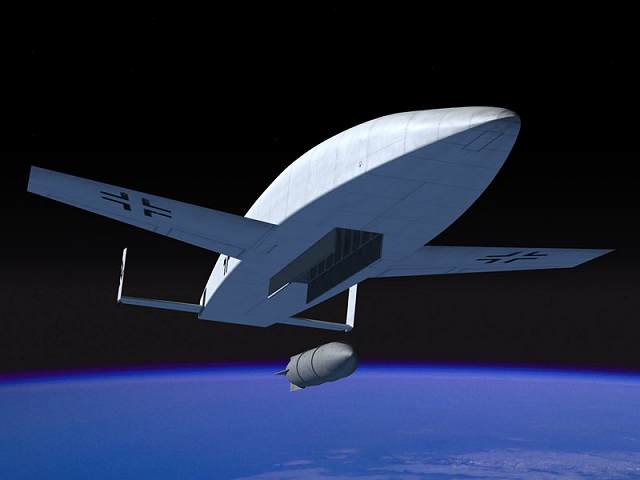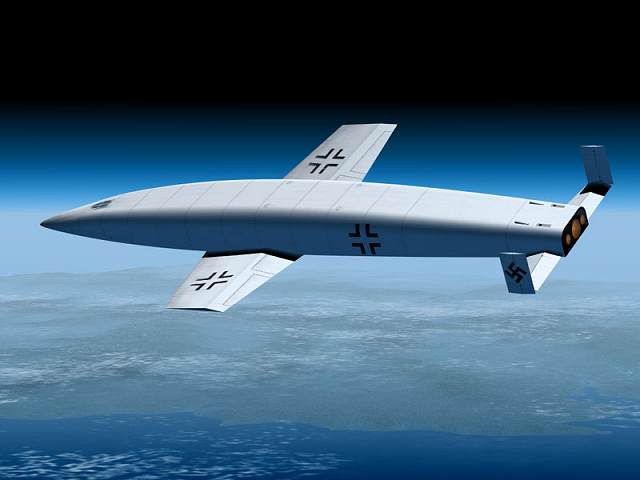A peculiar flight profile was thought of for the Silverbird. It was to be propelled down a 3 km (1.9 mile) long rail by a rocket-powered sled that developed a 600 ton thrust for 11 seconds. After taking off at a 30 degree angle, the aircraft would proceed to an altitude of 1.5km (5100'), at a speed of 1850 km/h (1149 mph). The main rocket engine would then be fired for 8 minutes, burning 90 tons of fuel and propelling the Silverbird to a speed of 22100 km/h (13724 mph) and an altitude of over 145 km (90 miles). Now the skipping started...
As the aircraft accelerated and descended under the pull of gravity, it would then hit the denser air at about 40 km (25 miles) and 'skip' back up, just like a stone thrown on a lake. The skips would gradually decrease until the aircraft would glide back to a normal landing using its tricycle landing gear, after covering approximately 23500 km (14594 miles).

http://www.luft46.com/jhart/jhsang.html
In June 1935 and February 1936, Dr. Eugen Sänger published articles in the Austrian aviation publication Flug on rocket-powered aircraft. This led to his being asked by the German High Command to build a secret aerospace research institute in Trauen to research and build his "Silverbird", a manned, winged vehicle that could reach orbit. Dr. Sänger had been working on this concept for several years, and in fact he had began developing liquid-fuel rocket engines. From 1930 to 1935, he had perfected (through countless static tests) a 'regeneratively cooled' liquid-fueled rocket engine that was cooled by its own fuel, which circulated around the combustion chamber. This engine produced an astounding 3048 meters/second (10000 feet/second) exhaust velocity, as compared to the later V-2 rocket's 2000 meters/second (6560 feet/second).
http://members.visi.net/~djohnson/misc/sanger.html
http://www.spacefame.org/sanger.html
http://www.pp.htv.fi/jwestman/space/sang-e.html


It's a good thing they didn't get these.
ReplyDeleteYou bet!
ReplyDelete